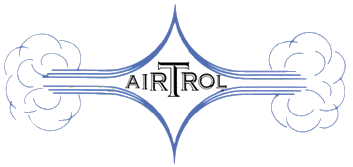How Diaphragm Check Valves Work
Check valves are used in many applications to control the flow of gases or liquids using varying mechanisms. Vacuum systems and small-bore, low-pressure systems often incorporate diaphragm check valves to prevent reverse flow and the risks associated with it. This blog post will discuss the types of diaphragm check valves and how they work.
What are Diaphragm Check Valves?
Check valves, also known as one-way valves, enable liquids or gases to flow in one direction while preventing backflow in systems where unwanted reverse flow could otherwise cause malfunctions, leaks, or contamination.
In diaphragm check valves, a self-centering disc or rubber flexing diaphragm acts as the mechanism for preventing reverse flow. As inlet pressure increases, the diaphragm check valve opens and allows contained substances to flow through.
There are two main types of diaphragm check valves:
- Free-floating valves that default open
- Fixed flexing valves that default closed
While default-open diaphragm valves don’t require any cracking pressure due to the free-floating elastomeric diaphragm, valves that default to a closed state rely on inlet pressure to counter the fixed diaphragm’s elasticity. In applications requiring a low-pressure check valve, either will usually work.
How Diaphragm Check Valves Work
Depending on the type of diaphragm check valves you use, they can work in a couple of different ways.
Free-Floating Elastomer Disc Diaphragms
These diaphragm check valves are typically always open and feature an elastic self-centering elastomer disc as the primary functional element. The body of the valve facilitates self-centering over the valve’s sealing surface or seating area.
The valve’s sealing surface is located on the inlet side of the valve body, with a smooth surface that’s either curved back or concave, containing a small opening at the center. In the event of backflow, the disc lays across the sealing surface, effectively sealing off the center opening. Once closed, the valve blocks the reverse flow of any substances.
On the outlet side of these check valves, there is normally a type of two-level valve seat featuring certain built-in channels. The disc lies on the seat whenever positive flow travels toward the exit port or outlet. At this point, the flowing substance travels around the disc and through the channels, ultimately exiting via the exit port.
Fixed Flexing Elastomer Diaphragms
Unlike free-floating diaphragm check valves, this diaphragm check valve is normally closed and features a hinged or pleated diaphragm. Positive pressure in these valves allows for downstream or forward flow, which applies pressure against the diaphragm.
The pressure that forces the valve to open is known as cracking pressure, which is the minimum amount of pressure sufficient to allow minuscule amounts of gases or liquids to travel through. With enough pressure, the diaphragm opens to allow media to travel through.
A decrease in flow creates a low pressure differential throughout the valve. Once the pressure lessens enough, it will eventually cause the diaphragm to close.
Diaphragm Check Valves From Airtrol Components
Both types of this compact check valve allow for consistent automatic flow control, and they are useful in a variety of low-pressure and vacuum applications. You can also choose from different types of materials for the body and diaphragm to ensure compatibility with certain chemicals or other media. These valves are also highly adaptable when used in conjunction with compatible protective filtration.
At Airtrol Components, we can provide you with high-quality, reliable diaphragm check valves for low-pressure applications. To learn more about our solutions and find the right check valves for your specific application, contact us today.


